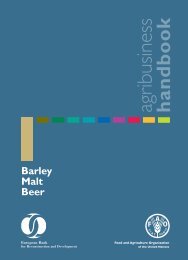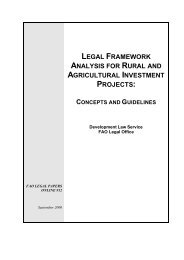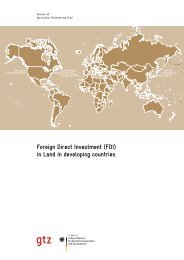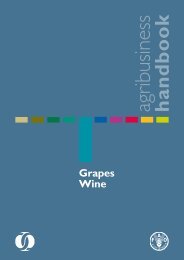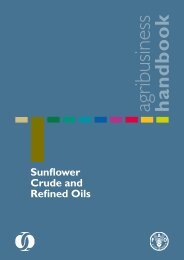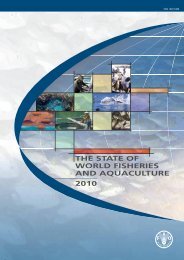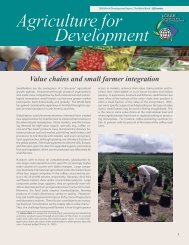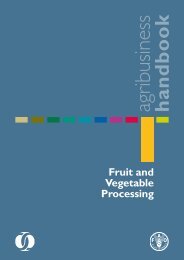Agribusiness Handbook: Milk / Dairy Products - FAO
Agribusiness Handbook: Milk / Dairy Products - FAO
Agribusiness Handbook: Milk / Dairy Products - FAO
You also want an ePaper? Increase the reach of your titles
YUMPU automatically turns print PDFs into web optimized ePapers that Google loves.
Table 9: The world’s top dairy companies by turnover, 2007 (billion USD)<br />
Ranking Company Country <strong>Dairy</strong> turnover<br />
1 Nestle Switzerland 23.1<br />
2 Danone France 14<br />
3 Lactalis France 13.2<br />
4 Friesland/Campina Netherlands 12.1<br />
5 <strong>Dairy</strong> Farmers of America United States 11.1<br />
6 Dean Foods United States 10.4<br />
7 Fonterra New Zealand 10.4<br />
8 Arla Foods Denmark/Sweden 8.8<br />
9 Kraft Foods United States 6.4<br />
10 Unilever Netherlands/United Kingdom 6.1<br />
11 Saputo Canada 5<br />
12 Parmalat Italy 4.9<br />
13 Bongrain France 4.7<br />
14 Land o'Lakes United States 4.2<br />
15 Meiji Dairies Japan 4.1<br />
Source: Rabobank International<br />
2.3 Scale of production and size of plants<br />
As companies have sought ever-greater processing efficiencies to compete<br />
effectively in the global market, dairy processing plants have increased in size<br />
and scale. Even so, there is significant variation in size among the major milk<br />
producing areas of the world. In the EU, the largest manufacturing plants tend<br />
to be in the Netherlands, where butter factories each produce about 22,000<br />
tons/year, cheese factories about 25,000 tons/year and powdered milk plants<br />
about 16,000 tons/year. This scale of plant production compares favourably<br />
with the United States, but falls well below the scale of plant in New Zealand,<br />
where butter factories each produce about 35,000 tons/year, cheese factories<br />
about 31,000 tons/year and powdered milk plants a massive 70,000 tons/year.<br />
The size of processing plant production is related to the size of the relevant<br />
market. Thus, New Zealand, which serves the world market, has very large<br />
processing plants. In the EU, the Netherlands is the major exporter, and plant<br />
size reflects this. However, elsewhere in the EU, many plants are smaller,<br />
multipurpose and able to switch from one product line to another as market<br />
conditions demand.<br />
21



